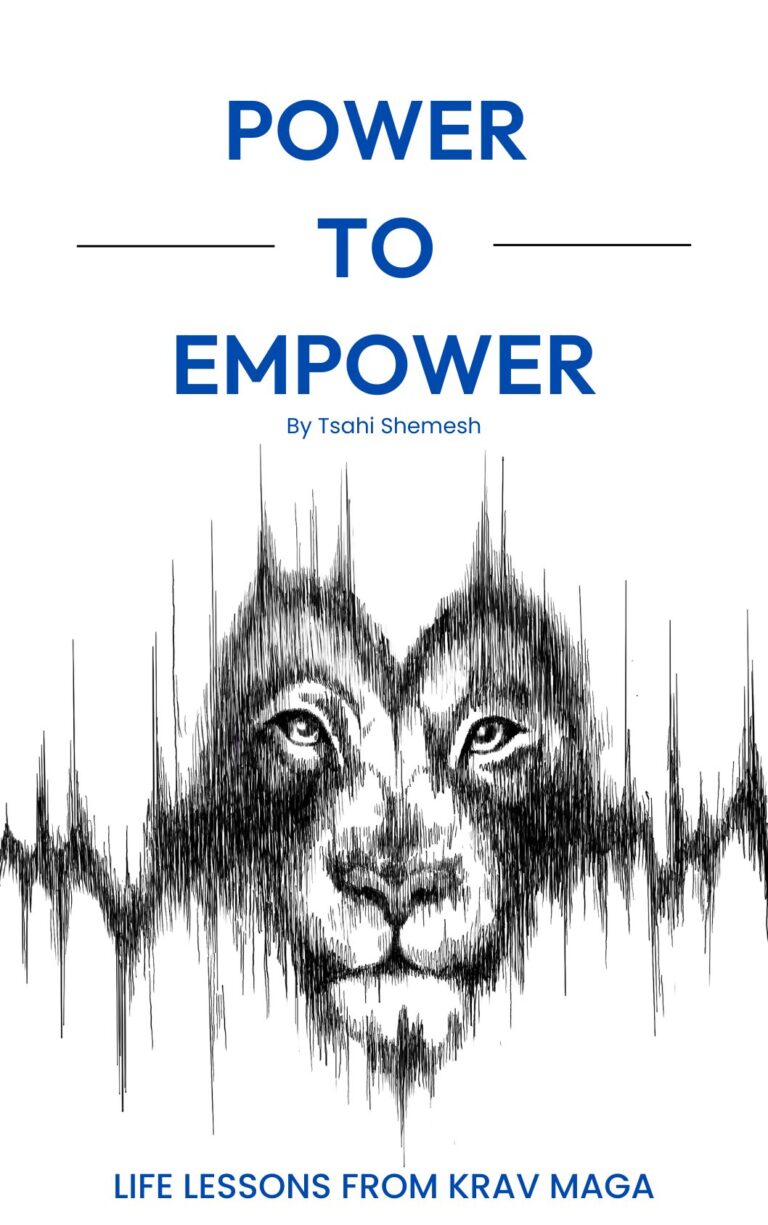Case Study of Brooklyn subway shooting on March 14th, 2024: 36-year-old man shot by his own gun
Want to carry a weapon for self-protection? Read this before you do that.
Too many times, I hear students asking to be trained in how to use a knife or a gun for self-defense. My immediate response is, “Your body is the first weapon you should learn how to use.”
Carrying a weapon can increase a sense of safety and power. Knives and guns are game-changers in a fight, and usually, whoever holds them has a significant advantage.
But before carrying a weapon, you must answer a few basic questions:
- Are you willing to use it? If you draw a weapon but are unwilling to use it, it can be used against you. Your asset turns into a liability immediately.
- Do you know how to use it safely? By that, I mean: Can you handle a malfunction? Do you know how to draw quickly? Do you know where to aim if you do not wish to kill? Can you handle the weapon under stress and an adrenaline rush?
- Are you prepared to handle the legal consequences?
- Are you aware of the potential for moral injury?
Carrying a weapon can also escalate minor problems into larger ones, as one might rely on the weapon as a solution rather than as a last resort, as it should be. Once you present the weapon to your opponent, you demonstrate a willingness to escalate the fight, which will likely turn your opponent into a much more aggressive adversary especially if they don’t see disengagement as an option. These decisions are often based on ego, not survival.
The incident took place in Brooklyn on a northbound A train at 4:45 p.m. on Thursday, March 14th. A 32-year-old man boarded the train at the Nostrand Avenue Station and was confronted by a 36-year-old man already on the train.
Both men didn’t imagine this train ride would be so detrimental to the rest of their lives.
Witnesses described the older man as being aggressive and provoking the younger one. The confrontation escalated, and the 36-year-old, armed with a gun, approached the 32-year-old, threatening him with a physical assault because of what he believed his “immigration status” to be.
The situation intensified when a woman accompanying the 32-year-old man got involved in the incident. In the video (available on various social media outlets), she is seen stabbing the 36-year-old man during the fight, trying to protect the man she was with.
In the midst of the physical altercation, a gun was drawn by the 36-year-old and the 32-year-old managed to take the gun away and fire shots, critically striking him 4 times in the body and head leaving him now hospitalized.
Much of the altercation was captured on cellphone video, showing the dispute and the panic that ensued among the passengers, with one woman pleading to be let out of the train. The incident culminated when the train arrived at the Hoyt-Schermerhorn station, where police, alerted by the sound of gunfire, rushed to the scene.
This leads me to an important point I often explain in training: How do you respond to stress? Can you manage it well enough to be responsive but not reactive?
One of Krav Maga’s main principles is ‘minimum damage required’ and avoiding any harm unless absolutely necessary. Hurting someone badly must serve a “greater good.”
I will remind all readers that this is “easier said than done” because everyone can see 20/20 in hindsight. We have the luxury of repeatedly watching the video, slowing it down, and analyzing a situation we were not part of. We don’t REALLY know how the people inside the situation felt and what triggers they had to act and react. We just assume they would act within ‘reason,’ but that is absolutely the wrong metric to judge when someone feels their life’s on the line.
But let’s start from the beginning for a deeper analysis. The original gunman initiated the altercation, driven by racism and anger, as evidenced by videos on social media. Had he sought peace, there may have been no interaction between the two men, and consequently, no conflict would have arisen.
I believe his decision to engage was influenced by several factors. The aggressor, who chose this interaction had the advantage of a larger body physics, the possession of a gun, and an apparent level of aggression that signaled him as a high threat with a willingness to inflict harm.
To the other man, he considered the aggressor as a significant threat, not only to himself but also to the woman by his side.
When disengagement without harm became impossible, the required level of aggression to survive this encounter escalated dramatically. Once the original armed instigator (who became the shooting victim) engaged in a physical fight, the woman accompanying the man being attacked decided to intervene, stabbing him and escalating the conflict further.
The drawing of a gun marked a turning point; it was no longer a means to deter or de-escalate but to conclude the altercation in a way that empty-handed responses could not. The intention behind its use transformed the situation into a confrontation with irreversible consequences. This highlights the critical importance of understanding the responsibilities and ramifications of carrying and potentially using a weapon.
This pivotal moment not only altered the lives of those directly involved but also affected the entire city of New York. The incident leaves many feeling unsafe, reluctant to use the subway, and fearful of encountering unreasonable, unhinged, and violent individuals on public transportation.
It serves as a reminder of the fine line between self-defense and aggression. The decision to use the weapon shifted the scenario from defensive to offensive, challenging notions of necessity and proportionality in use of force. It underscores the complex ethical and legal dilemmas faced by those who choose to arm themselves, emphasizing the need for comprehensive training, emotional regulation, and a profound understanding of the legal system’s perspective on self-defense and the use of deadly force.
The legal outcome of this incident is of keen interest, as it involves numerous complexities that blur the line between justice and legality. Regardless of the legal implications, there is a lot to do and not to do to avoid such an escalation, because in NYC, all outcomes are possible. So stay vigilant, be aware, and always prioritize safety over ego.
Do something amazing,
Tsahi Shemesh
Founder & CEO
Krav Maga Experts


It’s unclear to me that there would have been any fight at all if the younger, smaller man had been willing to just sit there and accept the verbal taunts of the aggressive older man. I’m not saying he SHOULD have suppressed his “manhood” and done that, and in fact he likely did all New Yorkers a favor by taking on this gun-toting bully and putting him in the hospital. But I wonder what would have happened if he just sat there and refused to take the aggressor’s bait. After all, he got very lucky in NOT being the one who got shot!
We hope that choosing not to engage in confrontational situations will help prevent them from escalating. Often, this strategy can effectively keep us safe. However, it’s important to recognize that sometimes it might not work, leaving us feeling scared and helpless. Although there’s no sure way to know when we might need to defend ourselves, preparing by building our strength and resilience is wise. Ideally, we’d never have to use such measures, but it’s best to be prepared just in case.
Tsahi
I have attended “Active Shooter Training” where they taught me to “Run, Hide, Fight”. If I were trapped in a subway car as a “bystander” during an active shooter situation, should I join the fight since there is nowhere to truly run or hide?
Good question, but the answer is not a “one size fits all.”
Fighting is last resort. When not fighting cost you more than fighting, that is a “hail mary” kind of a move.
Ideally, you don’t engage if you don’t must, but not engaging will cost you more, then better die trying.
Sometimes there are no good solutions. In a horrible scenario, you can choose between “bad” and “very bad” options.
I am reading this post again shortly after reading a recent news article where someone was just stabbed at my train stop close to the gym at 96 broadway. It was unprovoked and yet the victim took the brunt of this act of aggression which is usually the case in such instances. I agree in deescalation and trying to not engage in any physical fight unless truly necessary. Words cant hurt us but when push comes to shove and we are immediately under the threat of physical harm, we have to fight. Last resort indeed but it’s better to be prepared. My only dilemma is when emotions are high and you are terrified, how do you know when it’s truly time or it might be too late? Im scared to take the train to be completely honest. But it’s part of the process of learning to defend myself. It’s just the paradox of wanting to learn comes with exposing myself to danger because it’s always inevitable when youre out in the city. It’s a scary world out there.. all the more we need kme in our lives.